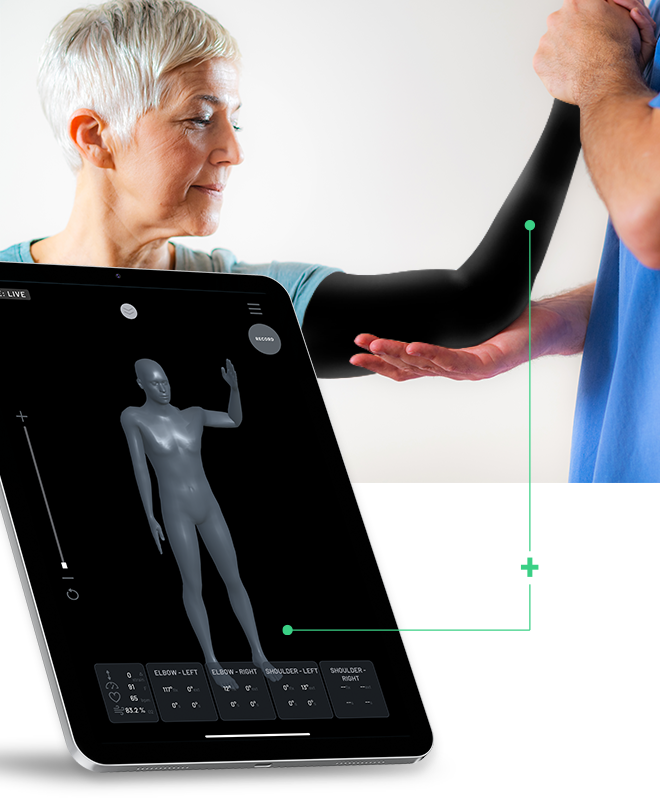Why Physical Therapy Telehealth is Here to Stay
The emergence of the Covid-19 pandemic transformed individual lives and global institutions and systems. Covid also turned telehealth into an irreplaceable part of care delivery. According to the CDC, the number of telehealth visits increased by 154% in March of 2020 compared to March 2019. By the end of 2020, telehealth claims rose 2,980% (no, this is not a typo!) from the year prior.
While remote physical therapy might seem odd — there's manual therapy treatment, after all — many providers and patients alike were surprised at how beneficial remote sessions became. From revenue opportunities to higher adherence and access, telehealth proved its value in the physical therapy space. Even as the world opens back up, there are many reasons why remote care should be here to stay.
[Click here to learn more about the BioSleeve telehealth solution from Cipher Skim]

The Current State of Telehealth Coverage
We don’t fully know how telehealth services will fit into America’s healthcare infrastructure in the long term. On April 15th of 2021, the U.S. Department of Health & Human Services (HSS) announced the renewal of the Public Health Emergency (PHE), which means telehealth will continue to be covered, and subsequently billed for, in most cases until July 21st of this year. And, as of May 26th, United Healthcare announced it would adopt a permanent telehealth policy that includes PTs — the first large U.S. insurer to do so.
Other bills have also been introduced to Congress, including CONNECT for Health Act, Protecting Access to Post-COVID-19 Telehealth Act of 2021, and Ensuring Telehealth Expansion Act of 2021. These bills currently await introduction to the House of Representatives.
Why Telehealth Should Stay as the PHE Ends
While we await a long-term understanding of how telehealth will be integrated into our healthcare system, many providers are pointing to a variety of reasons why remote patient monitoring should become the new normal.
At the beginning of the pandemic, telehealth made sense: It allowed everyone to stay safe while alleviating the burden on clinics and hospitals treating Covid patients. But as it's becoming safer to interact again, why do we still need remote care delivery?
Many providers and patients alike point to one of telehealth's greatest benefits: accessibility.
[Click here to learn more about the BioSleeve telehealth solution from Cipher Skin]

Removing the Barrier of Care
Put yourself in the shoes of a physical therapy patient. Imagine they have tendinopathy and degenerative labrum fraying in their hip. A rehab plan includes consistent hip, glute, and abdominal strengthening. The patient should be doing these exercises daily with regular check-ins to examine improvements in strength and mobility while ensuring they're doing them correctly.
Even a 20-minute session has a huge impact: correcting form, revealing improvements, and teaching new exercises as the patient progresses. Yet, doing rehab at a clinic requires hopping in a car or public transportation, sitting in a waiting room, and then commuting home. It could require finding childcare or taking PTO, or at the very least reshuffling the day to fit it in.
What if this patient only had to open their laptop and sign into a virtual session? What if this session was covered by insurance, just as it would in-clinic? What if they could see a renowned physical therapist in a different city, who they otherwise would never travel to?
Technology Paving the Telehealth Path
Telehealth makes physical therapy approachable, affordable, and accessible. While it doesn't replace hands-on treatment, the implementation of technology has transformed remote patient monitoring; patients are seeing similar, if not better results when utilizing telehealth sessions.
How? Emerging technologies are designed to monitor a patient’s progress remotely, using automated data that helps therapists and patients improve physical therapy outcomes. (Check out this study on the effects of virtual exercise rehab.)
It's no secret we’ve developed a novel hardware and software MSK monitoring solution that enhances the telehealth experience for therapists and patients. Our digital recovery sleeve, the BioSleeve, is a smart compression garment. As patients wear the sleeve and conduct exercises, their information is visualized in the Digital Mirror so therapists can view, track, and measure the patient's range of motion and biometric data at once. An added benefit is the patient can see their progress in the app, giving them the much-needed nudge to continue doing exercises and complete programming.

The Future of Telehealth
After living in a pandemic for over a year, clinic data shows that many patients are still uncomfortable returning to clinics and would prefer virtual care. Additionally, the implementation of telehealth has decreased no-show rates, allowing clinics to stay open and patients to stay healthy.
Telehealth is a sustainable alternative for healthcare providers, including physical therapists. It’s a win-win for everyone involved! At Cipher Skin, we believe the best outcomes occur when the right technology is in place — ensuring remote sessions are accurate, engaging, and seamless. If you’re interested in seeing how our solution makes this a reality, read more about our solution for PTs or book a demo with our in-house physical therapist.

